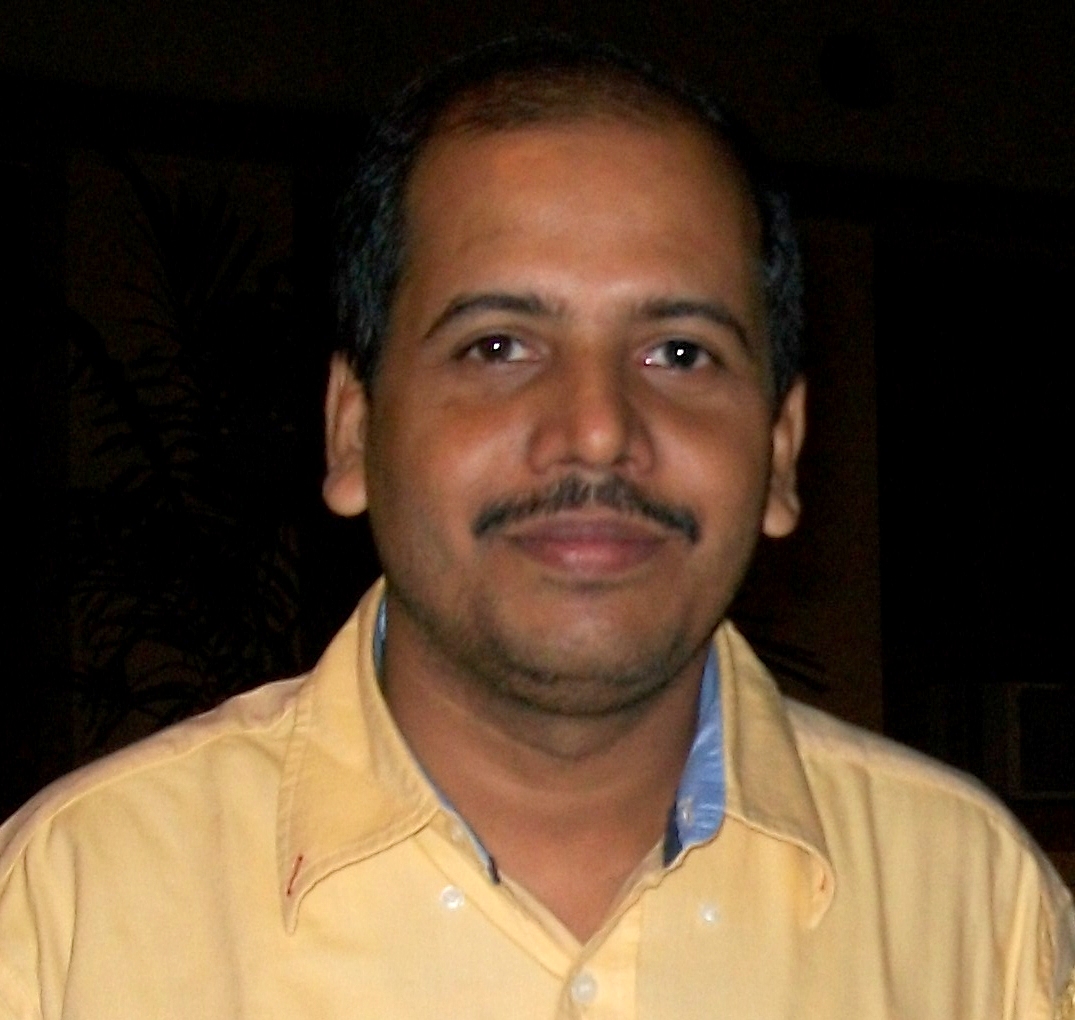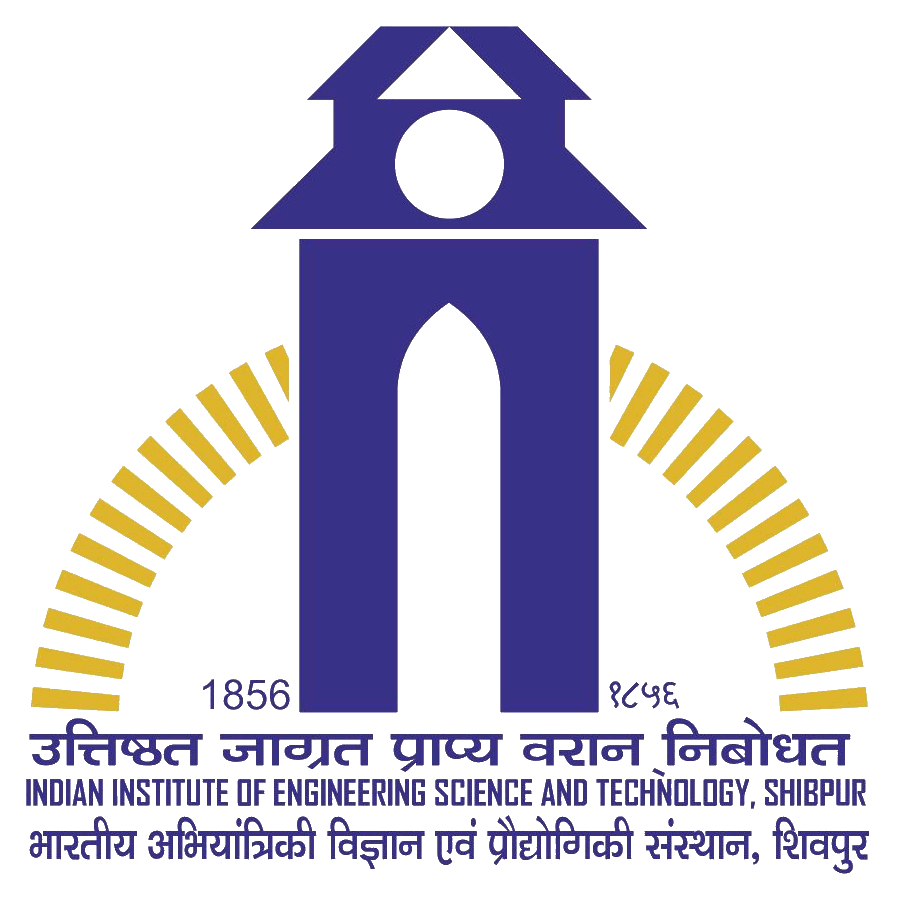
Dr. Sudip Kumar Chattopadhyay
Professor
Department of Chemistry
Academic Qualifications
- Ph. D. (Chemical Physics), Jadavpur University, India, (at IACS, Kolkata-32)
- M. Sc. (Physical Chemistry), University of Burdwan, India
- B. Sc. (Chemistry), University of Burdwan, India
Contact
Phone
- Office: +9133 2668 4561/62 (Ext. 515)
- Residence: +91 94331 44725
- Fax: +9133 2668 4564/2916
Address
- EMail: sudip@chem.iiests.ac.in, sudipkchattopadhyay@gmail.com
Area of Research
- Electronic Structure Theory (Relativistic and Nonrelativistic): Chemistry is still an experimental science, with the synthesis and characterization of molecules, both those present in nature, and those first made in the laboratory, far outstripping the theory of these molecules. Atoms in molecules may be arranged in a variety of complicated and beautiful three-dimensional shapes. The molecule’s specific shape influences its every property, from its color to its toxicity. The same atoms arranged in one way form ethyl alcohol, in another way, ether. Thus, it is necessary and also quite helpful to theoretically investigate various electronic structures and properties of a molecule to get a clear picture of the same which one can use as a finger print of the system.
Our group's research is focused on theoretical and computational studies of many-body phenomena in chemistry. Our main interest is in high accuracy methods and methods based on first principles of quantum mechanics (no empirical parameters other than fundamental constants) that allow us to be predictive.The most important thrust area of our group is the development and applications of molecular many-body theories: ab initio electronic structure theory to compute energies, potential energy surfaces (energies in three-dimensional shapes over the entire range of geometries) and reaction barrier height by means of which one can model and analyze the various ubiquitous and critical chemical processes: the breaking-making of chemical bond(s) of chemically challenging and interesting molecules. To investigate and address the problem of theoretical spectroscopy of chemical systems with arbitrary complexity and generality of small- to moderate-sized molecules and molecular ions, new molecular many-body methods are also developed and applied. We also investigate the structure, spectrum and chemistry of heavy atoms and molecules containing them by using relativistic many-body methods. - Chemical dynamics in condensed phases: Anotherfocus of our research is the investigation the dynamicsof small systems and pertinent properties. It is well documented that the properties of objects at the nanoscale are governed by the intricate inter-play of both thermal fluctuationsand quantum effects which are moreover strongly affected by the coupling to external environments. The accurate understanding of the dynamical effects emerged from such a coupling is of central importance in various branches of chemical physics. The interaction with the environment can perturb the evolution of the system which can be used as a powerful tool to control its dynamics. The study of the dynamics becomes particularly rich and challenging when system and/or environment are in the influence of external rapidly oscillating forces.
Research Grants Support
- CSIR (New Delhi, 2014) : Title of the Project “Development and Application of the Theoryof Dynamical Systems to Problems inCondensed Phases” (w.e.fOctober 01, 2014)
- DST (New Delhi, 2010): Title of the project “Profiling the electronic structure properties of relativistic and non-relativistic systems using computationally cost effective ab initio methods” [Approved, Ref. No. Project EMR/2015/000124]
- DST (New Delhi, 2010): Title of the Project “Relativistic study of the excited/ionized states of heavy atoms using coupled cluster based linear response theory”[Ref No. SR/S1/PC-61/2009] (Completed).
- CSIR (New Delhi, 2008): Title “Development and applications of theoretical models to study anisotropic diffusion and transport phenomena in some complex systems” [01/2257/08/EMR-II dated 01.11.2008] (Completed).
- DST (New Delhi, 2006):Title “Development and Applications of Intruder Free Multi-reference Perturbative and Non-perturbative Formalisms” (Completed).
- UGC(New Delhi): Title “Study of Dissipative Dynamics to Investigate the Transport Problem : Effects of Velocity Dependent Coupling”(Completed).
Courses Undertaken
UG COurse
B.E./ B.Tech. & M.Tech 5-year Dual degree courses : Theory (1st and 2nd Semester)
- Chemical Kinetics
- Phase rule
PG Course
M. Sc. (Chemistry)
- Basic and Advanced Quantum Mechanics
- Spectroscopy and Group Theory
- Chemical Dynamics in Condensed Phases
- Statistical Mechanics
Recent Publications
- Sinha Ray, S., Manna, S., Chaudhuri, R. K., and Chattopadhyay, S. (2017) "Description of C2 dissociation using a naive treatment of dynamical correlation in the presence of quasidegeneracy of varying degree” Mol. Phys. (Invited, Special Issue in Honor of Debashis Mukherjee).
- Ghosh. A., Sinha Ray, S., Chaudhuri, R. K., and Chattopadhyay, S. (2017) “Four-Component Relativistic State-Specific Multireference Perturbation Theory with a Simplified Treatment of Static Correlation” J. Phys.Chem. A121, 1487−1501(Invited, Special Issue“Mark S. Gordon Festschrift”).”
- Chattopadhyay, S.,Chaudhuri, R. K., Mahapatra, U. S., Ghosh, A., and Sinha Ray, S.(2016) “State-specific multireference perturbation theory: Development and present status” WIREs Comput Mol Sci 2016, 266–291 (Invited Advanced Review Article).
- Chaudhuri, R. K., Chattopadhyay, S., Freed K. F., U. S. Mahapatra (2013) “Theoretical studies of the ground and excited state structures of stilbene” J. Phys. Chem. A 117, 9424.Invited Article inSpecial Issue: “Oka Festschrift: Celebrating 45 Years of Astrochemistry”
- Chaudhuri, R. K.Chattopadhyay, S., andMahapatra, U. S. (2013), “Taming the electronic structure of lead and eka-lead (Flerovium) by the relativistic coupled-cluster method”J. Phys. Chem. A 117, 8555. Invited Article in Special Issue: “Structure and Dynamics: ESDMC-2013”
- Shit, A., Chattopadhyay, S. andRay Chaudhuri, J. (2013) “Quantum stochastic dynamics in presence of a time-periodic rapidly oscillating potential: Nonadiabatic escape rate”J. Phys. Chem. A 117, 8576. Invited Article in Special Issue: “Structure and Dynamics: ESDMC-2013” .
- Chattopadhyay, S., Mahapatra, U. S. and Chaudhuri, R. K., (2012) “State specific multireferenceMøller--Plesset perturbation theory: A few applications to ground, excited and ionized states” Chem. Phys.401, 15. Invited Article for Special Issue on “Recent advances in electron correlation methods and applications”.
- Shit, A., Chattopadhyay, S. andRay Chaudhuri, J. (2012) “Time-independent description of rapidly driven systems in the presence of friction: Multiple scale perturbation approach” Chaos 22, 013131.
- Chattopadhyay, S., Chaudhuri, R. K. and Freed, K. (2011) “Geometry optimization of radicaloid systems using improved virtual orbital-complete active space configuration interaction (IVO-CASCI) analytical gradient method” J. Phys. Chem. A115, 3665 (Invited Article, Part of the “Graham R. Fleming Festschrift” Issue.).
- Shit, A., Chattopadhyay, S. andRay Chaudhuri, J. (2011) “Effective quantum Brownian dynamics in presence of a rapidly oscillating space-dependent time-periodic field” Phys. Rev. E (Rapid Communication) 83060101(R).
